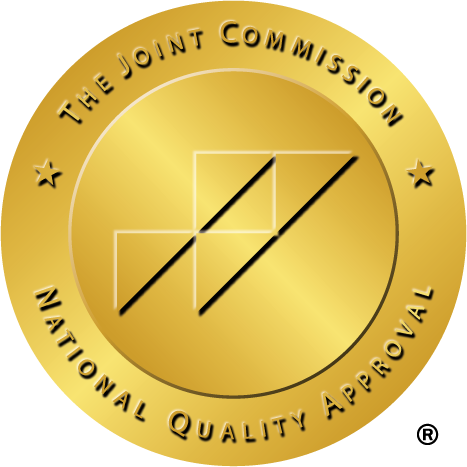Table of Contents
MDMA, also known as Molly or Ecstasy, or sometimes simply as X, is a relatively common illegal party drug.
While MDMA does have some approved medical uses, they are few and far between, and never include taking the drug for recreational reasons.
Yet, because of some of the side effects of MDMA, like euphoria, lowered inhibitions, and a slight daze that can make parties and loud crowded settings more enjoyable, it’s commonly used at parties and raves all over the world.
MDMA also comes in many different forms, including MDMA crystals and a powdered form of the same drug.
Unfortunately, like most street drugs, there can be serious consequences to using MDMA, and in severe cases, the drug can even be fatal.
Whether you’re a concerned parent, a teen considering using MDMA, or even an adult who uses or is considering using MDMA crystals, it’s important to understand the risks of MDMA crystals and how this drug can quickly turn dangerous or even fatal.
MDMA Crystals Side-Effects & Dangers
To fully understand the risks and dangers of using MDMA crystals, you have to understand a bit about why people use the drug in the first place.
If there weren’t some kind of payoff for using the drug most people wouldn’t take the risk.
Like pretty much all street drugs, there are a few different reasons someone might start taking MDMA.
First of all, you need to understand that almost everyone who takes MDMA does so because they want to get high and experience the drug. In some cases, MDMA has been used as a date-rape drug, but not with the frequency of other more notorious date-rape drugs like GHB.
People who are taking MDMA are usually still aware of their surroundings and able to make conscious decisions to some extent, though the high from MDMA does make more people friendlier and more likely to lower their inhibitions in ways that can lead to risk-taking behavior and risky sexual behavior.
There are two primary reasons people who take MDMA crystals by choice choose to use the drug:
- They want to experience the drug’s high
- They’ve heard that MDMA can help with social situations and make you friendlier, more loving, and even more sexual.
Notice that some people take MDMA specifically because it can help ease potentially sexual situations and that the friendliness and enjoyment of social situations is usually a bigger motivator behind MDMA crystals use than the high from the drug.
Some people may even use MDMA because they have social anxiety, or feel awkward in social situations.
That can make peer pressure a more serious concern with MDMA than other drugs. The effects of MDMA may make peer pressure more effective on some people and then may make them more prone to addiction as well.
With that in mind, let’s talk about the side effects of MDMA crystals, why this drug is dangerous, and how it works in your body.
One of the things you need to know about MDMA crystals is that taking the drug can improve your ability to recognize and name your positive emotions while making it harder to recognize and name your negative ones.
That doesn’t necessarily mean it’s actually making you feel good, but it does show that the drug makes your brain focus more on your positive feelings.
Unfortunately, along with the positive feeling of MDMA crystals, the drug also reduces your cognitive ability and ability to reason through problems and make complex decisions.
MDMA has also been shown to stay in your blood for 2 days after you take it. While you might not be feeling the effects of the drug the same way after the immediate high wears off, it may still have an influence on your mood and decision-making ability during that time.
MDMA crystals are both a stimulant and a psychedelic, meaning that they can give you more energy/make it hard to sleep, and can alter your perceptions of your senses. That means that hallucinations, especially touch hallucinations, are relatively common for people taking MDMA.
One of the primary ways MDMA affects your body and mind is by dramatically increasing the level of Serotonin in your brain. Serotonin is an important neurotransmitter that helps regulate your mood, impacts sleep, and energy levels, and may be involved in memory, along with several other important functions.
Unfortunately, increasing the amount of serotonin in the brain doesn’t come without its own side effects and consequences, including reducing the amount of serotonin your body produces for several days, and possibly impacting your memory and memory retention.
Long-term use of MDMA can lead to long-term problems with your body’s ability to regulate and use serotonin normally, which can have a significant negative impact on your moods, sleep, and memory.
Other common side effects of MDMA crystals include:
- Muscle tension
- Tremors
- Involuntary teeth clenching
- Muscle cramps
- Nausea
- Faintness
- Chills
- Sweating
- Blurred vision
- Confusion
- Anxiety
- Depression
- Paranoia
- Sleep problems
- Drug craving
MDMA is also commonly associated with hyperthermia, where your body temperature rises above normal levels. Hyperthermia can become dangerous when not controlled and is especially dangerous when combined with dehydration.
Unfortunately, MDMA use may make dehydration more likely since you may not remember to drink normally while taking the drug.
This is one of the ways that MDMA use can be fatal. The combination of dehydration and hyperthermia is serious, requires immediate medical attention, and can lead to seizures, brain damage, and other potentially fatal complications if not addressed properly.
Are You Addicted To MDMA Crystals Or Other Party Drugs? How To Spot An Addiction In Its Early And Late Stages
A lot of people don’t realize that there are multiple stages to drug addiction and that you can be addicted to a drug without realizing you have an addiction.
In some cases, the early phases of addiction might not even interfere much with your normal life or productivity.
But that’s one of the challenges of recognizing and dealing with an addiction. If you miss the early signs, that means you’re likely to be more addicted and to be experiencing more problems because of your addiction by the time you realize what’s happening.
Here’s what you need to know about the early phases of addiction, the later phases of addiction, and how to spot addiction in yourself and others.
Early Addiction To Party Drugs
Early addiction to party drugs can look like just wanting to go to parties more often and have a good time.
You might not realize that some of the cravings you’re feeling to go to parties and other social situations are actually a craving for the drugs you take while you’re in those places.
You might notice that your mood seems to be lower than normal between parties, or even between doses of MDMA crystals if you take MDMA outside of parties as well.
Insomnia is a relatively common side effect of early MDMA addiction, which may also work to increase your craving for the drug. Since MDMA is a stimulant, the fatigue and tiredness from lack of sleep may make you crave the energy boost from MDMA use.
Your productivity and ability to be social outside of MDMA use might not seem impacted at this point, but you may notice that you’re starting to get more social anxiety, especially when it’s been a long time since your last dose.
At this point, you may be able to simply stop taking the drug without having to go through more serious work to overcome your addiction. But you may also need additional support or medical interventions depending on your situation, how much and how often you’ve taken MDMA, and any other complications that make overcoming addiction more difficult.
Late Addiction To Party Drugs
Once addiction has progressed it usually starts to become more disruptive. You might want to party every night or every chance you have. You’ll probably start buying more MDMA, taking more when you use it, and hoarding a stash of the drug for use between parties, or so you don’t have to buy every party you go to.
You might not even like how MDMA feels any longer, but simply crave the physical and mental boost from the drug. Some people always like the feeling of the high, but if you notice that you’re taking MDMA to feel better but not because you like the feeling or the side effects of the drug, you are probably dealing with an addiction and chemical dependence.
Sleep deprivation and low mood are likely to be interfering professionally, personally, and with your social life and relationships. You might not feel like you’re yourself without the drug, or like you need MDMA crystals to be able to get through important or emotional moments in your life.
Regardless of what stage of addiction you’re dealing with, it’s important to remember that it is possible to recover from your addiction and to feel better than you do now.
You don’t have to do it alone. Here’s how you can get help.
What To Do If Addicted To MDMA Crystals: How To Get Help For An Addiction
If you’ve made it this far and you think you might have an addiction to MDMA crystals or other party drugs, congratulations. We’re sorry that you’re dealing with an addiction, but recognizing what’s happening is the first thing you need to do to start getting better.
If you’re still here and still reading this, you’re already well on your way to overcoming addiction and starting your recovery.
The next step is getting the resources you need to successfully overcome addiction.
That could look like talking to a trusted doctor for information about local treatment options, or you might want to look online for treatment center information, support groups, and other tools that can make it easier to recover.
Remember, there’s no reason you need to do this alone. If you want professional support and medical assistance in overcoming your addiction, that’s actually a good thing. It proves that you’re serious about recovery and are getting ready to get better.
Are you prepared to take the leap towards recovery? Our North Carolina drug rehab, New Waters Recovery, is waiting for you. Reach out to our Admissions department to understand more about our unique approach to overcoming addiction, learn about our programs, and start the intake process if you decide to embark on your recovery journey with us.
You can do this.
Sources:
New Waters Recovery has strict sourcing requirements, relying on sources from scholarly research and peer-reviewed studies, as well as those from medical associations. We keep away from using third-party references as our sources. In order to learn more about how we choose our sources and our sourcing guidelines, please reference our Editorial Policy.
Skomorowsky, A. How Molly Works in the Brain. Scientificamerican.com. Published on March 10, 2015. Accessed on August 23, 2022. https://www.scientificamerican.com/article/how-molly-works-in-the-brain/
Buddy T. How Long Does MDMA (Ecstasy) Stay in Your System?. Published on March 13, 2020. Accessed on August 23, 2022. https://www.verywellmind.com/how-long-does-ecstasy-stay-in-your-system-80255
Department of Justice, Drug Enforcement Administration. MDMA/Ecstasy Drug Factsheet. Published April, 2020. Accessed August 23, 2022. https://www.dea.gov/sites/default/files/2020-06/Ecstasy-MDMA-2020_0.pdf
New Waters Recovery Editorial GUIDELINES
At New Waters Recovery, we take your health and wellness seriously. We have a thorough process in place to ensure the integrity of information that is displayed on our website. All content published to our site undergoes a rigorous medical review by a doctorate level clinician to ensure medical accuracy. Read More About Our Process







